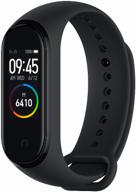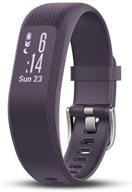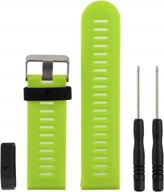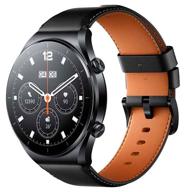
Review on 🕶️ Razer Anzu Smart Glasses: Enhancing Eye Comfort with Blue Light Filtering & Polarized Sunglass Lenses - Experience Immersive Audio with Low Latency and Built-in Mic & Speakers - Voice Assistant & Touch Control Compatible - Extended 5hrs Battery Life - Trendy Rectangle/Large Design by Robert Rick

Not bad glasses, but with a few downsides
I have two pairs of Bose smart glasses, so maybe I was expecting too much. These aren't bad glasses, but they do have several disadvantages. I don't like the touch controls and I don't like the audio equalizer options. More on that later. The kit includes a pair of glasses, a carrying case, a USB charging cable, a second set of lenses, a microfiber cleaning cloth and an instruction manual. The carrying case protects the glasses well from typical transport shocks and has a compartment for carrying the charging cable. The charging cable is a Y-cable with a USB connector and two proprietary connectors that magnetically attach to each temple of the glasses. Do not lose or damage the cable, otherwise you will not be able to charge these glasses. The second set of lenses are sunglass-style polarized lenses that can replace the installed clear lenses with blue light filter. The manual directs you to the manufacturer's website for replacement instructions, which I haven't done yet. Although I haven't tested them, the manufacturer claims a battery life of 5 hours. The glasses turn on when opened and off when closed or left unused for a long time. When opened, the glasses will search for a previously paired device and if found, they will automatically connect. If the device is not found, the glasses will enter pairing mode. Once paired, the glasses will receive audio from the paired device. Up to six devices can be connected to the glasses, with only one being active at a time. There are two touch areas on the temples that control most of the glasses' functions. By default, each temple is programmed with the same functions. The Razer Audio app allows you to change the programs of each temple, which is good if you prefer certain functions to be controlled from the right temple and others from the left temple. The volume can only be adjusted from the connected device. The Razer Audio app has limited functionality. It is mainly used for firmware upgrades, touch programming and equalizer selection. The glasses are quite comfortable. They have a spring clip that perfectly reduces the chance of breakage. The fit is snug enough that they won't fall off when I shake my head, but they're not too tight. The lenses came clear, no defects. The size and shape of the glasses are similar to what I currently wear, so I'm happy with how they look. The sound of the speakers is acceptable, if not outstanding. When I first tried the glasses on, I didn't hear any sound until my phone volume was around 75%. After I updated the firmware, the volume control worked as it should, and I could hear the audio at low volume settings. It is not certain if this change is due to a firmware update or some other reason. While there is an Equalizer option in the Razer Audio app, there are only three options: Standard, Enhanced Clarity, and Treble Boost. Aside from the default equalizer, the other two options are useless when listening to music. I can only assume that they are intended for conversation while on the phone or while listening to a webinar. These two settings sound very tinny. It would be better if the user could create an individual equalizer setting according to his personal listening preferences. I really don't like the "touch" feature on these glasses. Unlike other glasses, earbuds and headphones I've had, to be operated with a fingertip, the selection requires a tap and a short hold. This touch-and-hold operation is delicate; doesn't always work when I think it should. Of course, this may be the operator's fault and not the goggles' fault. But I still don't like this kind of selection. Interestingly, the app has a guide where you can test the touch function in real time, and the app will let you know if you're doing it right. For the most part, these glasses are acceptable. They would be much better if the shortcomings I mentioned were addressed. Of course, this may be the operator's fault and not the goggles' fault. But I still don't like this kind of selection. Interestingly, the app has a guide where you can test the touch function in real time, and the app will let you know if you're doing it right. For the most part, these glasses are acceptable. They would be much better if the shortcomings I mentioned were addressed. Of course, this may be the operator's fault and not the goggles' fault. But I still don't like this kind of selection. Interestingly, the app has a guide where you can test the touch function in real time, and the app will let you know if you're doing it right. For the most part, these glasses are acceptable. They would be much better if the shortcomings I mentioned were addressed.
- Blue Light Filter or Polarized Sunglasses Lenses: Blue light filter reduces screen glare, protects eyes and reduces eye strain so you feel fresh and focused while entertaining or working, and interchangeable polarized lenses protect your eyes from glare. Sun
- Slightly torn
New products
Comments (0)
Top products in 🕶️ Smart Glasses

Polarized Bluetooth Audio Sunglasses - Flows: Open-Ear Speakers, Extended Battery Life, UVA & UVB Protection, Smart Glasses for Men & Women – Bruno Style (Matte Black)

6 Review

🎧 OhO Sunshine Audio Transitional Glasses: Voice Control, Open Ear Style for Music and Calls, Bluetooth 5.0, IP44 Waterproof - Perfect for Outdoor Sports

7 Review

🕶️ Flows: Polarized Bluetooth Audio Sunglasses with Open-Ear Speakers - High Sound Quality, Long Battery Life, UVA & UVB Protection - Bruno Style (Slate Gray)

4 Review
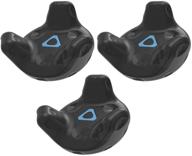
🕹️ HTC Vive Tracker 3 Pack (2018) for Virtual Reality Headset

3 Review


